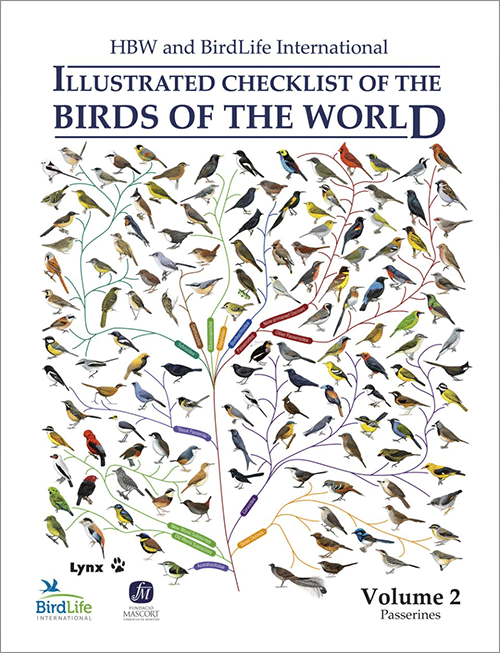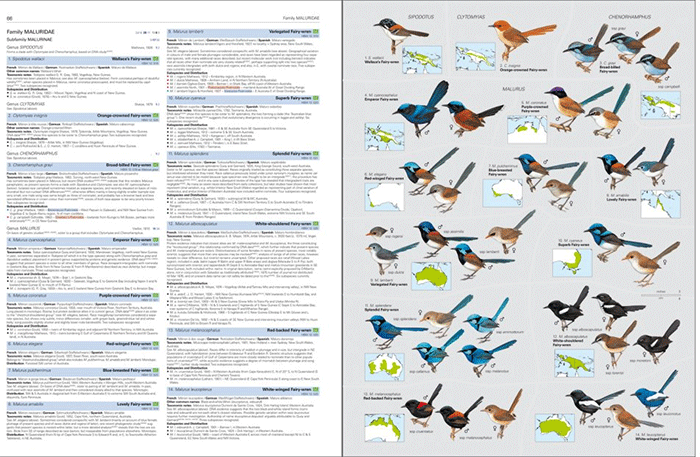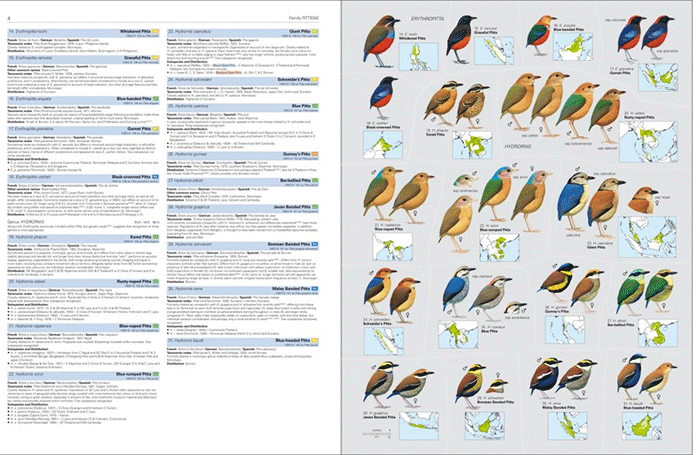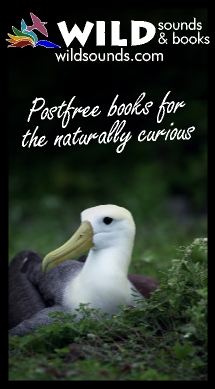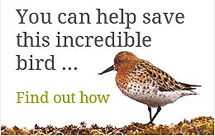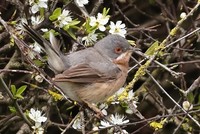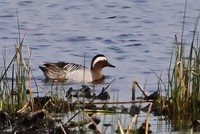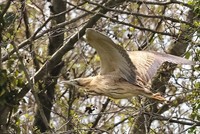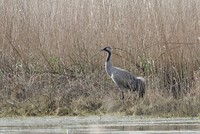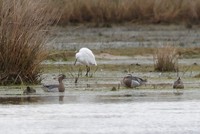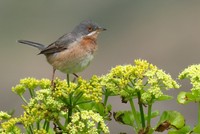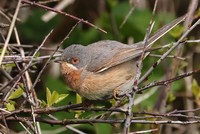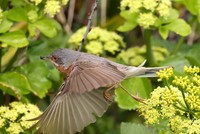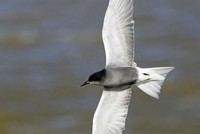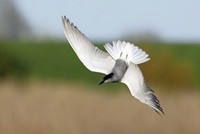The Illustrated Checklist of the Birds of the World Volume 2 - Passerines
HBW and BirdLife International
This is the second volume of the HBW/BirdLife Checklist, the first volume of which was reviewed here in August 2014. This second volume, covering the passerines, completes the coverage of all the world’s birds.
It is worth briefly rehearsing the philosophy and history of this Checklist. Described (initially by others) as a ‘rapid assessment program’, its aim is to recognise as rapidly as possible the true avian diversity of regions - by and large the Old World tropics - which are generally regarded as ‘over-lumped’ (or ‘under-split ‘ if you prefer). Given the perceived glacial and erratic progress of regional taxonomic authorities, the project is an attempt to provide a new and more uniform worldwide taxonomy which can quickly inform conservation planning and action. At the core of this approach is the adoption of the ‘Tobias criteria’, a scoring system for morphology and vocalisations (but not genetic data) designed to establish an objective, consistent and transparent approach to defining species limits. The proposed approach - ‘Quantitative criteria for species delimitation’ - was published by Tobias et al. in ‘Ibis’in 2010. For a full account of the Checklist project’s methodology see the Introduction to Volume 1.
The publication of Volume 1 triggered a lively debate about the merits of this methodology. Indeed it is fair to say that it proved highly controversial. One has only to read the public exchanges between Nigel Collar et al. and James Van Remsen in ‘Journal of Field Ornithology’ to see how entrenched and at times heated these disagreements have become.
The appearance of Volume 2, representing the completion of the project, will inevitably add further fuel to this fire. This is clearly recognised in the Introduction to this new volume. Here we read a continuing defence of the Tobias criteria and a useful essay on the relative merits in taxonomic decision-making of morphological, vocal and genetic evidence. In respect of the latter the authors maintain a cautious attitude, embracing its conclusions where they align with the results of morphological and vocal analysis but maintaining a respectful and patient distance where they don’t. Ultimately the authors seek, perhaps more in hope than expectation, what they decribe as ‘a truly integrative taxonomy’. To what extent the Checklist approaches this goal will no doubt continue to be debated but of course there never has been any such thing as unanimity in taxonomy. The arguments swirling around this Checklist are merely today’s iterations of the ‘what is a species?’ debates which go back to Darwin and Linnaeus.
Furthermore, professional taxonomists are just one of the target audiences for this work. As is made clear in the Introduction, the Checklist aims ‘to serve the contemporary interests and needs of science, conservation and recreational experience in equal and equitable measure’. There will surely be less debate about the conservation importance of this work. At a time when the natural world is in retreat as never before, the new availability of a global conservation-led taxonomy focused on recognising the true avian diversity of some of the most threatened regions of the world is surely something around which everyone can unite. With the backing of BirdLife International, this Checklist is already being widely adopted by conservation bodies and by legislators, most notably perhaps by the European Union.
The final ‘stakeholder group’ for this work (those in search of the ‘recreational experience’ referred to in the Introduction) is of course birders - the main intended purchasers of the Checklist. So what is the ordinary birder to make of this publication? Many will not be overly concerned about the detailed arguments for and against particular taxonomic methodologies. These lie beyond the competence of most of us. Many will just want a scientifically well-grounded taxonomic framework within which to record their own sightings. The records committee members, bird report editors and avifauna authors who curate the ornithological record will want pretty much the same too.
This Checklist is one of four available global taxonomies (the others being Clements/Cornell, Howard & Moore and the IOC World Bird List). These other three differ significantly from the HBW/BirdLife Checklist in their methodology but are much more closely aligned with each other, indeed at least two are working towards ever closer convergence. This will pose an increasingly binary choice between traditional approaches based on ‘expert review’ of the published literature - an essentially piecemeal, iterative process - and the HBW/BirdLife model with its near-wholesale adoption of the Tobias scoring system.
Most birders are of course familiar with the former methodology (albeit criticising it for its ‘delays’ in announcing taxonomic changes) and many will remain committed to it as a model. In this respect they will note the BOU’s recent decision to adopt the IOC World Bird List as the basis for the ‘official’ British List. As a result, the HBW/BirdLife Checklist will not be used by BOURC nor in due course, presumably, by BBRC and many county bird report editors.
That said, birders are free to follow any taxonomy they like (and those with more of a world bird focus will be much less concerned by such parochial matters anyway). In this context there is much to like about the HBW/BirdLife Checklist.
Three of the global taxonomies now exist as an online spreadsheet but only this Checklist exists in both an online and a book form. Just like the first volume, this second publication is a high quality product - large, heavy, lavishly illustrated (and expensive). After the brief Introduction, the layout is of course identical, with the ‘checklist’ on the left hand page and the illustrations on the right. As in the first volume, the checklist is much more than a simple list, however. It also includes each species’ scientific name, French, German and Spanish names and IUCN designation, a Handbook of the Birds of the World (HBW) reference, a distribution summary, a (sometimes quite detailed) ‘taxonomic notes’ section and a full list of recognised subspecies with range descriptions for each. As before, the font is quite small and may require reading glasses. The text section is completed by a short appendix of passerine species which have become extinct since 1500.
The illustrations are again of a uniformly high quality. A large number of artists have been used and although the styles vary (and readers will inevitably prefer some over others), their overall quality is high and they mesh together in a surprisingly seamless way. All species are covered, as are some distinctive subspecies and plumage morphs. These illustrations are really what sets this Checklist above the online lists. Here each species is more than an anonymous line on a spreadsheet. Instead, through its painting it can spring to life, at least in the imagination. Also on the right hand page are ‘thumbnail’ (i.e. quite small) range maps, newly researched and showing country borders.
There also remains of course the close relationship between the Checklist, the BirdLife Data Zone, HBW and ‘HBW Alive’, the latter now brought up to date to reflect the work which has gone into the Checklist. In other words, the Checklist is not a ‘stand alone’ product. It is instead part of a suite of complementary offerings which, taken together, form the most comprehensive source of information available about the world’s birds.
And what about the consequences of the Checklist’s methodology? At the end of the day, many will be most interested in the specifics of what is recognised as a species and what is not. Whether one likes the ’lumps’ and ‘splits’ should not of course be the only basis for deciding on one’s favoured taxonomy but it will nevertheless be a prime interest for many. HBW recognised 6,008 species of passerine. In this new volume this figure has risen to 6,592, giving a grand total of 10,964 bird species for the world, an overall incraese of 11% over HBW for non-passerines and passerines combined.
It is of course impossible to give a commentary on all the taxonomic judgments made - the reader will just have to go through the book to discover what they are - but a few examples of particular relevance to British birding will give a flavour of the Checklist’s approach. There are, as expected, some new ‘splits’, for example Red-tailed Shrike, Siberian Chiffchaff and Eastern Yellow Wagtail but there are also some ‘lumps’, most notably of the stonechats (most forms now included within Common Stonechat) and the redpolls (all forms now treated simply as Redpoll). Therefore, despite the overall rise in the number of species, this is far from being a ‘splitter’s charter’. Indeed, the Checklist is often, as in the cases cited above, surprisingly conservative, preferring to wait for further studies which cover all relevant taxa. In the case of the stonechats, therefore, not only is the recent DNA-based ‘split’ (adopted by IOC) of Stejneger’s Stonechat not recognised but the earlier ‘split’ of the African, European and Siberian Stonechat groupings is not recognised either. Such caution may yet turn out to be justified.
It is impossible not to be awed by the work which has gone into this massive project. It is a huge achievement, a real testament to the commitment of all involved in its production. Although it has, inevitably, caused its share of politics, the now-complete Checklist provides for the conservation professional an important new benchmark in defining which species are out there and which should be the most immediate subject of attention. For the recreational birder it provides a magnificent celebration of the world’s birds and their spectacular and astonishing diversity. That is something upon which all can surely agree.
Andy Stoddart
17 February 2017
Share this review
Commission for Conservation
Rare Bird Alert does not profit from the sale of books through Wildsounds. Instead we are part of their Commission for Conservation programme where a percentage of every sale made through RBA helps supports BirdLife's Spoon-billed Sandpiper Fund.
